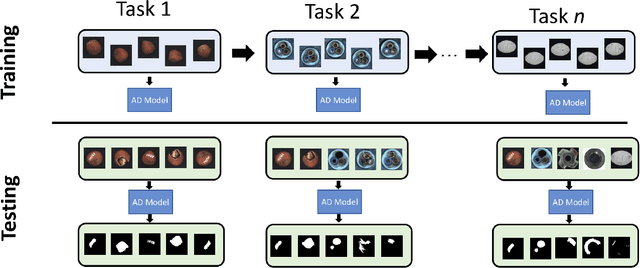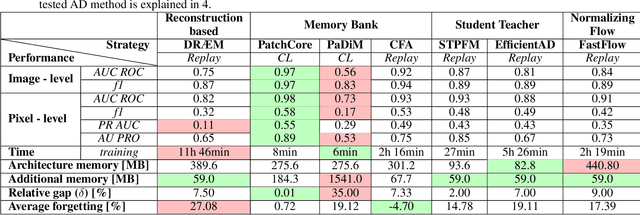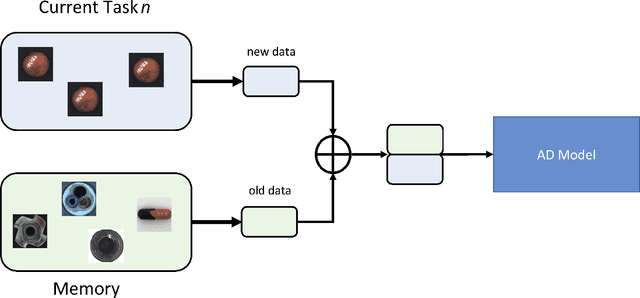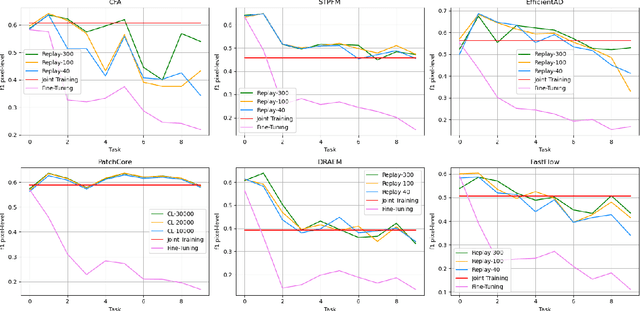Unveiling the Anomalies in an Ever-Changing World: A Benchmark for Pixel-Level Anomaly Detection in Continual Learning
Paper and Code
Mar 19, 2024



Anomaly Detection is a relevant problem in numerous real-world applications, especially when dealing with images. However, little attention has been paid to the issue of changes over time in the input data distribution, which may cause a significant decrease in performance. In this study, we investigate the problem of Pixel-Level Anomaly Detection in the Continual Learning setting, where new data arrives over time and the goal is to perform well on new and old data. We implement several state-of-the-art techniques to solve the Anomaly Detection problem in the classic setting and adapt them to work in the Continual Learning setting. To validate the approaches, we use a real-world dataset of images with pixel-based anomalies to provide a reliable benchmark and serve as a foundation for further advancements in the field. We provide a comprehensive analysis, discussing which Anomaly Detection methods and which families of approaches seem more suitable for the Continual Learning setting.
 Add to Chrome
Add to Chrome Add to Firefox
Add to Firefox Add to Edge
Add to Edge